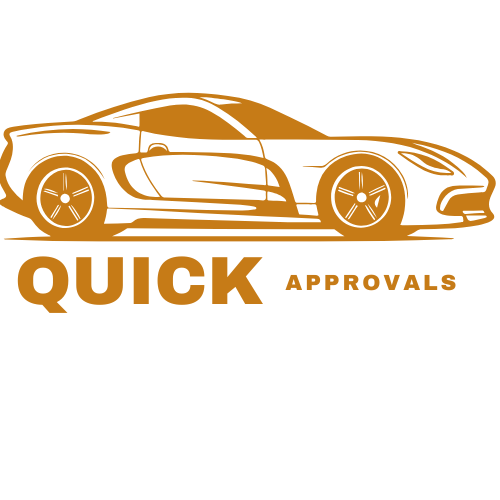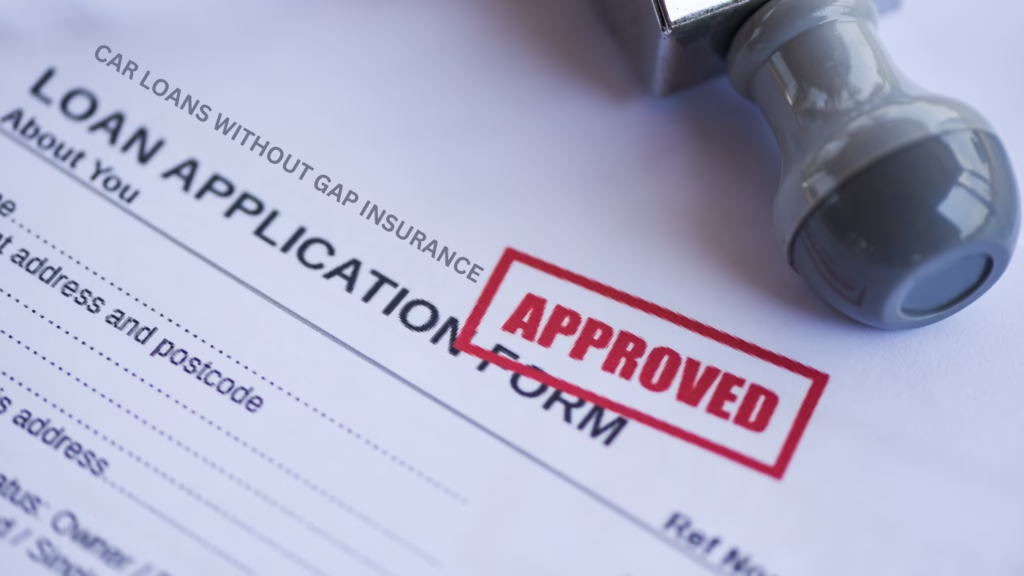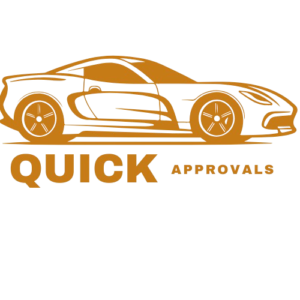car loans without gap insurance in Canada, Imagine driving your newly financed car off the lot, only to have it totaled in an accident a year later. Your insurance company offers a settlement based on the car’s current market value, but you still owe thousands more on your loan. This scenario highlights the importance of understanding car loans without gap insurance in Canada.
Gap insurance, or Guaranteed Auto Protection, is an optional coverage that bridges the gap between what you owe on your car loan and the actual cash value (ACV) of your vehicle if it’s totaled or stolen. While not mandatory, it provides peace of mind for many Canadian car buyers, particularly those financing new vehicles or taking long-term loans.
However, many Canadians choose to forgo gap insurance to save on costs or because they believe it’s unnecessary for their situation. This article explores what happens when you opt for a car loan without gap insurance in Canada, the associated risks, and alternatives to protect your finances. We’ll draw on authoritative resources like the Financial Consumer Agency of Canada and insights from lenders such as Quick Approvals to provide a comprehensive guide for making informed decisions.
Understanding Car Loan Options Without Gap Insurance Canada

When you finance a car in Canada, your lender typically requires collision and comprehensive insurance to protect the vehicle. These coverages pay out based on the ACV of your car at the time of loss, not the original purchase price or the remaining loan balance. A loss payee clause in your insurance policy ensures that, in the event of a total loss, the insurance company pays your lender first, up to the outstanding loan amount. If the ACV is less than what you owe, you’re responsible for the difference, which is where gap insurance becomes relevant.
Without gap insurance, you’re exposed to the risk of negative equity, where you owe more than your car is worth. This is common in Canada due to:
- High car prices: The average new car price is around $58,478, per industry data.
- Long loan terms: Average terms are 60–72 months, with some extending to 96 months.
- Rapid depreciation: New cars lose 15–20% of their value in the first year.
For those exploring car loan options without gap insurance Canada, understanding these factors is crucial to assess whether skipping gap insurance aligns with your financial goals.
What is Gap Insurance and Why Consider It?
Gap insurance covers the “gap” between your loan balance and the ACV of your car if it’s totaled or stolen. For example, suppose you finance a $40,000 car with a $5,000 down payment, leaving a $35,000 loan. After two years, you owe $25,000, but the car’s ACV is $20,000. If totaled, your insurance pays $20,000, leaving you to cover the $5,000 shortfall. Gap insurance would pay this $5,000, minus any deductible.
In Canada, gap insurance is typically offered by:
- Dealerships or lenders: Often rolled into the loan as a one-time premium, costing $600–$800 for 3–5 years.
- Insurance providers: Added to your policy, increasing premiums by about 5% of collision and comprehensive coverage.
Gap insurance is most beneficial for:
- New cars, which depreciate rapidly.
- Long-term loans (60+ months), common in Canada.
- Low or no down payments, increasing negative equity risk.
- Expensive or luxury vehicles with high loan amounts.
However, it’s not always necessary, particularly for used cars or short-term loans, prompting many to consider car loans without gap insurance in Canada.
What Happens Without Gap Insurance Car Loan Canada?
If you choose a car loan without gap insurance in Canada and your car is totaled or stolen, your insurance company will pay the ACV, which may not cover your loan balance. Consider this scenario:
- You finance a 2022 Audi Q5 for $54,700 with a $10,000 down payment and an 84-month loan.
- After two years, you owe $43,949, but the car’s ACV is $33,500 (per Canadian Black Book estimates).
- If totaled, your insurance pays $33,500, leaving you to pay $10,449 out of pocket.
This shortfall can be financially devastating, especially without savings to cover it. The risk is higher early in the loan term when depreciation outpaces loan repayment. Over time, as you pay down the loan and the car’s value stabilizes, the need for gap insurance diminishes, but the initial years are critical.
Risks of Not Having Gap Insurance on Car Loan Canada

Opting for a car loan without gap insurance in Canada carries several risks, particularly for those with long-term loans or new vehicles. Key risks include:
- Financial Burden: Paying the shortfall between the insurance payout and loan balance can strain your finances. For example, a $5,000–$10,000 gap is not uncommon for new cars.
- Negative Equity: Owing more than your car’s worth can complicate trading in or selling the vehicle, as you’d need to cover the difference to clear the loan.
- Credit Impact: If you can’t pay the shortfall, missed loan payments could harm your credit score, affecting future borrowing.
- Cycle of Debt: Some may roll negative equity into a new loan, increasing debt and interest costs.
These risks are amplified by Canada’s car market trends, where 60% of new car buyers finance for 5+ years, and new cars lose 20% of their value immediately after purchase. For those exploring best car loans without gap insurance in Canada, understanding these risks is essential to avoid unexpected costs.
| Risk Factor | Description | Impact |
|---|---|---|
| Financial Burden | Paying loan shortfall out of pocket | High, especially without savings |
| Negative Equity | Owing more than car’s worth | Limits trade-in or sale options |
| Credit Impact | Missed payments due to shortfall | Damages credit score |
| Debt Cycle | Rolling negative equity into new loan | Increases long-term debt |
Alternatives to Gap Insurance for Car Loans Canada
If you decide against gap insurance, several strategies can reduce the risks associated with a car loan without gap insurance in Canada:
- Larger Down Payment: A substantial down payment (20% or more) reduces the loan amount, minimizing the chance of negative equity. For a $40,000 car, a $10,000 down payment lowers the financed amount to $30,000.
- Shorter Loan Term: Loans of 36–60 months allow faster equity building. Financial experts recommend 60 months or less for new cars and 36 months for used cars to avoid prolonged negative equity.
- Depreciation Waiver: Some insurers offer a depreciation waiver (e.g., OPCF 43 in Ontario), which covers the original purchase price for new cars for 3–5 years if totaled. This is a viable alternative for new car buyers.
- Emergency Fund: Saving $5,000–$10,000 can cover potential shortfalls, providing flexibility without additional insurance costs.
- Choose a Car with Slower Depreciation: Vehicles like certain SUVs or trucks hold value better than luxury sedans, reducing gap risk.
Each option has trade-offs. For example, a larger down payment requires upfront capital, while a shorter loan term increases monthly payments. When exploring alternatives to gap insurance for car loans Canada, consult lenders like Quick Approvals to tailor loan terms to your needs.
How to Get a Car Loan Without Gap Insurance in Canada

Securing a car loan without gap insurance in Canada is straightforward, as gap insurance is optional. However, to minimize risks, follow these steps:
- Assess Your Budget: Ensure monthly payments fit your income, leaving room for savings or emergencies.
- Research Car Depreciation: Use tools like Canadian Black Book to estimate how quickly your chosen car will lose value.
- Compare Loan Terms: Opt for shorter terms (36–60 months) to reduce negative equity risk. Average interest rates are 3.5–7.5% for new cars and 4.5–10% for used cars.
- Make a Down Payment: Aim for 10–20% to lower the loan amount. For a $50,000 car, a $10,000 down payment reduces the loan to $40,000.
- Check Insurance Options: Ask your insurer about depreciation waivers or other coverages that might replace gap insurance.
- Work with Reputable Lenders: Explore options with lenders like Quick Approvals to find competitive terms.
By carefully selecting your loan and vehicle, you can confidently pursue best car loans without gap insurance in Canada while mitigating financial risks.
Pros and Cons of Car Loan Without Gap Insurance Canada
Choosing a car loan without gap insurance in Canada involves weighing benefits against potential drawbacks. Here’s a detailed breakdown:
| Aspect | Pros | Cons |
|---|---|---|
| Cost Savings | Avoids $600–$800 gap insurance cost, reducing loan or insurance expenses. | Risk of paying thousands out of pocket if car is totaled with a loan shortfall. |
| Suitability | Ideal for used cars or short-term loans with low negative equity risk. | High risk for new cars or long-term loans (60+ months) due to rapid depreciation. |
| Flexibility | Allows allocation of funds to other priorities, like down payments or savings. | Limited protection against unexpected total loss, potentially leading to debt. |
| Financial Impact | No additional premiums or loan add-ons, keeping payments lower. | Negative equity can complicate car sales or trade-ins, impacting future purchases. |
For those asking, should I get gap insurance for my car loan Canada, the answer depends on your car type, loan term, and financial preparedness. Used car buyers or those with substantial down payments may safely skip gap insurance, while new car buyers with long loans should weigh the risks carefully.
Q&A: Common Questions About Car Loans Without Gap Insurance in Canada
Do I Need Gap Insurance for Car Loan Canada?
Gap insurance is not mandatory in Canada, but it’s recommended for new cars, long-term loans (60+ months), or low down payments. It protects against owing more than your car’s worth if totaled. For used cars or short-term loans, the risk of a significant gap is lower, so you may not need it. Review your loan terms and depreciation estimates to decide. For more details, check the Financial Consumer Agency of Canada.
What Happens Without Gap Insurance Car Loan Canada?
Without gap insurance, if your car is totaled or stolen, your insurance pays the ACV, which may be less than your loan balance. For example, if you owe $30,000 but the car’s ACV is $22,000, you’d pay the $8,000 difference. This risk is higher early in the loan term for new cars. To mitigate, consider a larger down payment or shorter loan term.
Is Gap Insurance Necessary for Car Loan in Canada?
Gap insurance isn’t necessary for all car loans. It’s most valuable for new cars (depreciating 15–20% in year one), loans over 60 months, or minimal down payments. Used cars or loans of 36 months or less typically have lower gap risks. Assess your car’s depreciation and loan structure to determine necessity. Lenders like Quick Approvals can provide tailored advice.
How to Get a Car Loan Without Gap Insurance in Canada?
You can secure a car loan without gap insurance from most Canadian lenders, as it’s optional. To reduce risks:
Choose a shorter loan term (36–60 months).
Make a 10–20% down payment.
Select a car with slower depreciation.
Explore depreciation waivers with your insurer.
Contact lenders like Quick Approvals to compare loan options and ensure terms align with your financial goals.
Should I Get Gap Insurance for My Car Loan Canada?
Whether you should get gap insurance depends on your situation. If you’re financing a new car with a long loan or low down payment, gap insurance can prevent significant financial loss. If you’re buying a used car or can afford a shortfall, you might skip it. Weigh the $600–$800 cost against potential risks, and consider alternatives like a depreciation waiver.
Conclusion
Navigating a car loan without gap insurance in Canada requires careful consideration of your financial situation, car type, and loan terms. While gap insurance offers valuable protection against negative equity, it’s not mandatory, and many Canadians opt out to save costs. However, the risks of owing thousands if your car is totaled can be significant, especially for new cars or long-term loans. By exploring alternatives to gap insurance for car loans Canada, such as larger down payments, shorter loan terms, or depreciation waivers, you can mitigate these risks effectively.
For personalized loan options, consider resources like Quick Approvals. For broader insights, authoritative sources like the Financial Consumer Agency of Canada or RBC Royal Bank offer valuable guidance. Make an informed decision to protect your finances while enjoying your new vehicle.


